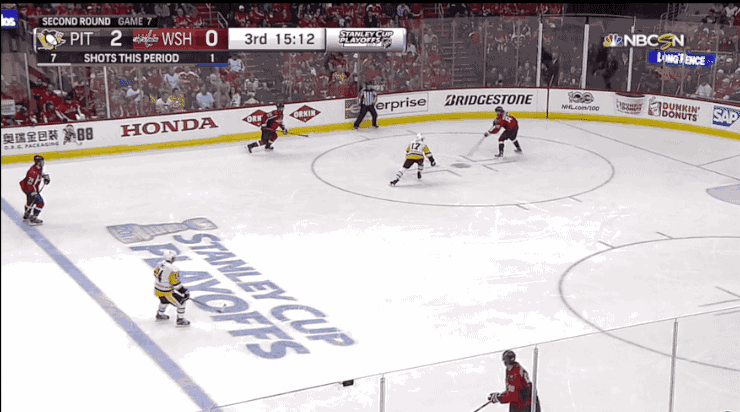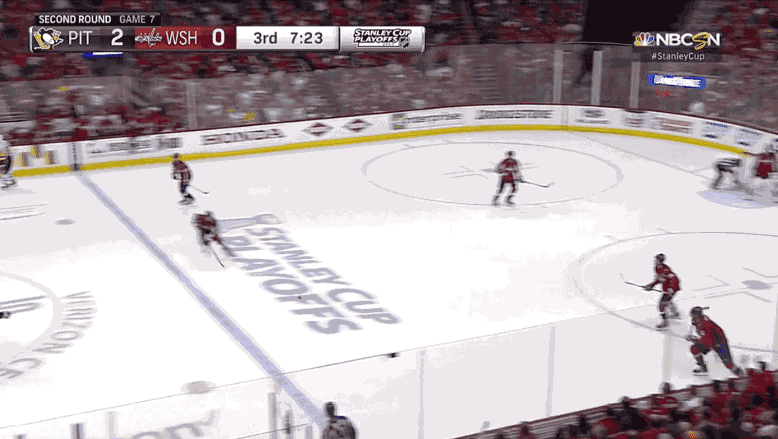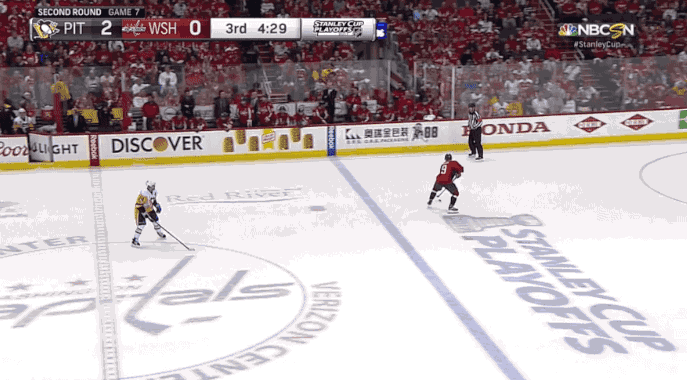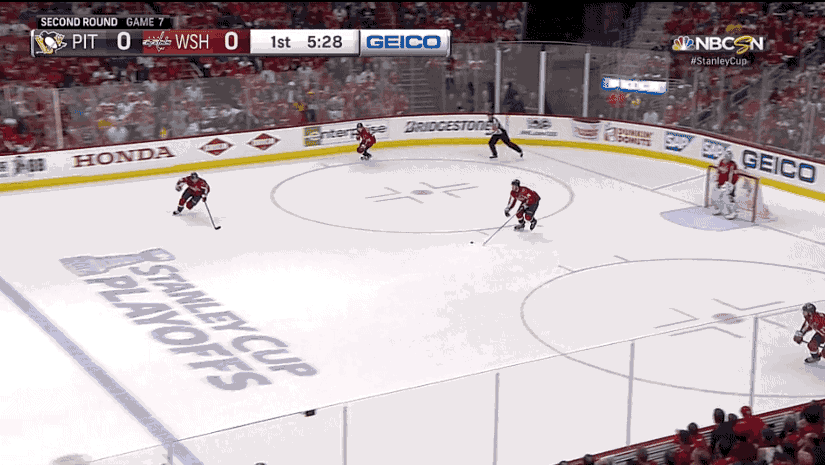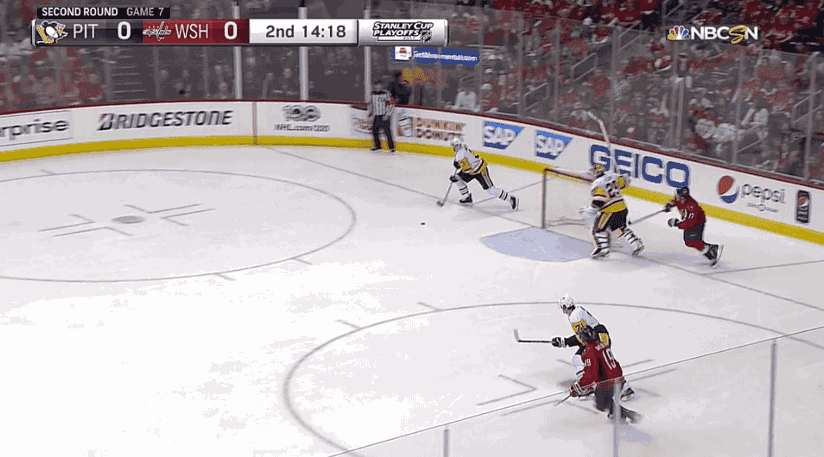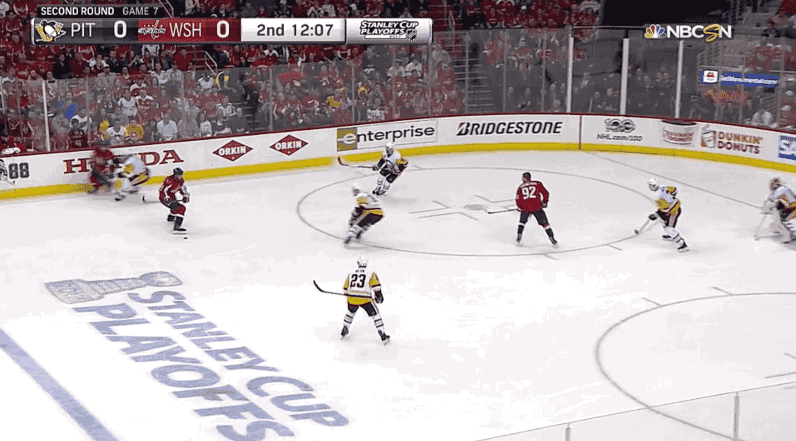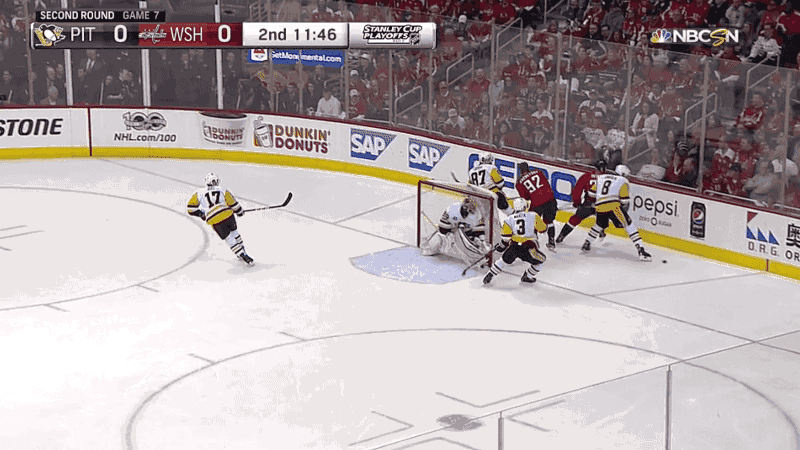The Pittsburgh Penguins found themselves in a bizarre position going into game seven against the Washington Capitals.
The first six games of the series saw them play in a decidedly un-Penguinlike fashion.
As I said after game two of the series, the Penguins looked more like the 2010 Montreal Canadiens than they did the 2017 Pittsburgh Penguins.
It appeared their strategy of converging on a white-hot Marc-Andre Fleury, cashing in on the handful of scoring chances they got, and riding Fleury’s gaudy save percentage had finally run out of steam. The PDO train was stuck in the station.
Then, Mike Sullivan busted the white board out at practice.


And if there’s one thing we’ve learned about Sullivan during his tenure as head coach, when that whiteboard comes out at practice (much like it did against Tampa prior to game six of last year’s conference final), things are about to take a dramatic turn.
And boy, did they ever.
The Penguins, on the biggest stage of their season, fresh off of a complete blowout that was easily their worst showing of the year, got right back to their bread and butter.
They beat the Capitals the exact same way the ousted them exactly one year earlier to the day: the neutral zone trap.
It was a beautiful sight to behold if you’re a Penguins fan. It was a recurring nightmare if you’re a Capitals fan.
Once again, the Penguins are advancing in a situation most people gave them no hope in. You can give the head coach, a guy who has proved to be as versatile as any coach you’ll see in the NHL, a good bit of the credit for it.
Just ask Matt Cullen, a veteran of 19 years who has played for his fair share of coaches. He was quick to remark after the game that Sullivan was “the best X’s and O’s coach I’ve ever played for.”
Let’s take a look at the video of how the Penguins were able to stymie the Capitals breakout and generate some scoring chances of their own off of their neutral zone structure.
The Trap Wins Again
If you’re wondering what a trap is, it’s essentially a 1-2-2 structure in the neutral zone. The Penguins send in a token forechecker to force the breakout pass, they leave two forwards and two defenseman stacked on top of each other deep in the neutral zone.
This structure takes the middle of the ice away. If a team is brave enough to try and break the puck up the middle, the 2-2 stack on the back end simply collapses on itself and eats the puck carrier alive in a swarm of bodies.
The goal of this structure is to force the play wide and away from the middle of the ice. Moreover, the ultimate goal is to generate turnovers. A staunch 1-2-2 can create chaos in the middle of the ice and reverse the play back the other way. That’s exactly what the Penguins did last night. Let’s take a look:
In this clip, you can clearly see the Penguins aligned in their 1-2-2 structure.
The Capitals try and break the puck through the middle of the ice, but there’s no room. The Penguins collapse. Taking the puck wide, Marcus Johansson ends up getting called for offsides as he attempts to find space in along the wall to skate the puck in here.
By heading wide, Johansson is doing the Penguins a favor. His linemates are heading full bore into the offensive zone and can’t get slowed down enough to stay onside.
There just isn’t any room in the neutral zone for the Capitals to operate. As this game wore on, the Capitals got more desperate to take chances, and they ended up playing right into the Penguins hands.
Here’s another great example:
This is a great example of turning solid defense into good offense.
The Penguins 1-2-2 has a “swing” in it. Which means if the high forechecker, the “1” at the top of the structure, overskates or is too far away to make a play, one of the middle “2” will step up and take his place, while the previous forechecker rotates back to get into position. That way, there’s a constant stream of pressure at the top of the ice. You can see that happen in the clip above.
The Capitals want to use the middle here, but it isn’t available. Once again, they head for the wall. The Penguins are waiting for them there, they generate a loose puck turnover, and then head off to the races in the other direction.
Their discipline in the middle of the ice and staunch approach in the neutral zone have forced the Capitals into turning the puck over in a bad situation.
Things got so bad for Washington that, at some points, they couldn’t even work the puck past the high forechecker. Chris Kunitz is the “1′ in the 1-2-2.
Capitals defenseman Dimitri Orlov passes this puck right into Kunitz’s legs, as he makes himself wide and uses his stick to break the potential pass up. Phil Kessel jumps on this turnover and the Penguins get a bit of zone time as a result of the Capitals frustration and confusion.
Another great look at the Penguins 1-2-2 trap here. The Capitals, once again, try to head up ice in numbers. They play the puck wide, but the Penguins have a forward and defenseman directly in the lane here. No dice for Washington, and the Penguins head back the other way.
Enough about the trap, we need to talk about the defensemen.
The story of the game six meltdown by the Penguins starts and ends with poor decision making and panic plays.
When a team as aggressive as the Capitals is draped all over you as you attempt to work the puck out of your own zone, it breeds the tendency for defensemen to make panic plays with the puck. It has a way of making you feel like you’re under pressure to make a quick play with the puck even if you have the time and space to make a smart play.
The Penguins defense spent most of game six with their heads down, blindly whacking at pucks and making poor outlet passes out of the zone, if they weren’t too busy blindly dumping it.
The Capitals love to control the wall, so it stands to reason that the middle of the ice would be open for a some decent breakout opportunities. Those chances were there, but the Penguins were too whipped up in a frenzy to pick their heads up and look for them.
The total opposite was true for game seven. I talked about the Penguins needing to find these plays to generate offense if they wanted to be successful:
That’s exactly what happened. The Penguins defense was calm, cool, and poised with their zone exits. They took the extra second to pick their heads up and make the right play, they restarted the breakout when the right option wasn’t available, and they even took some initiative to skate the puck out of danger themselves when the opportunity presented itself.
Lead by Brian Dumoulin, the Penguins defense helped the forwards achieve the goal of spending more time in the offensive zone. Here’s a few examples of how they went about doing so.
The above GIF is exactly what I was talking about when I mentioned utilizing the middle of the ice and taking what’s given to you. The Capitals quickly converge on Olli Maatta here but Kunitz is in prime real estate in the middle of the ice.
If the Penguins don’t work this puck the middle, they likely end up in a precarious situation where the Capitals have a numbers advantage. The Penguins gain the zone with speed here because Maatta was calmly able to pick his head up and make an accurate pass to a forward with time and space.
The above GIF gives us another great example of the Penguins calmly breaking the puck out.
Justin Schultz is under duress here by the Capitals forecheckers, but pay close attention to his posture as he approaches this puck. He’s evaluating his passing options before he even touches this puck. His head is up, he takes three looks, and then he makes a safe play to a forward in an open area.
In game six, this would have manifested itself as a blind whack off the glass. The Capitals would’ve pounced on it immediately. In this sequence, Schultz maps out his move ahead of time, paying no mind to the pressure from the Capitals. This is the definition of taking a hit to make a play.
I mentioned Dumoulin as being the leader of this unit in game seven, and this clip is a great example of why I believe that.
We all know Dumoulin isn’t the most fleet-footed skater in the league, but rather than force a bad pass or a meek clearing attempt here, he skates the puck out of danger himself.
This is a great piece of work that we just didn’t see in game six. Once again, take a look at Dumoulin’s posture. He takes two looks at this play, head up the whole way. He doesn’t like what he sees, and he heads off to the races himself.
I’m not here to tell you it was all sunshine and roses. The Penguins definitely made some mistakes in this game. The amount of big saves required of Marc-Andre Fleury tells us that story. That aside, this was their best performance of the playoffs. It was the ol’ recipe for Pittsburgh that has won them so many games in the Sullivan era. The trap was once again the funeral pyre for the Washington Capitals.
Stay tuned later this week as we preview the upcoming conference final against the Ottawa Senators and give you a few things to chew on in terms of potential match-ups.
Add The Sports Daily to your Google News Feed!

